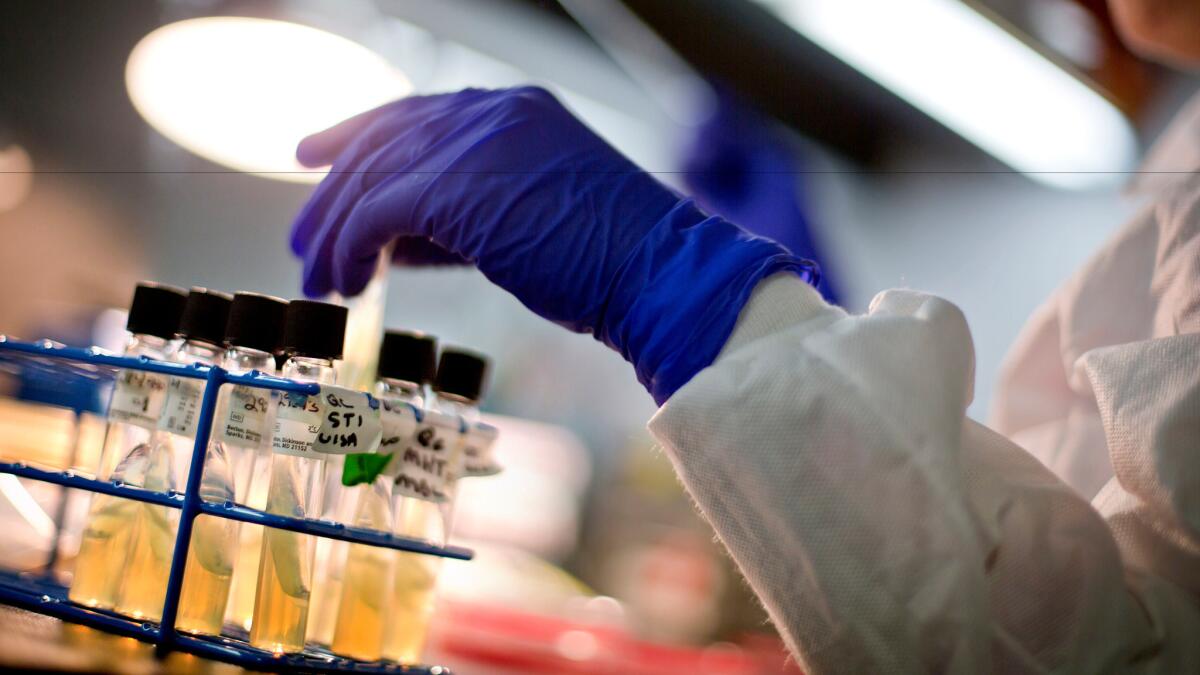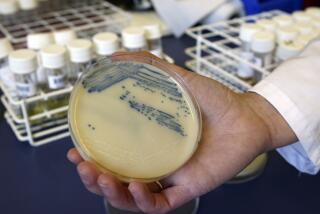Editorial: Stopping superbugs

On Tuesday, the U.N General Assembly will hold a high-level meeting to discuss one of the greatest contemporary threats to global public health. Not war, not Ebola, not Zika — but antibiotic-resistant microbes.
Scientists and public health officials have been warning for decades that overuse of antibiotics would inevitably lead to a rise of bacteria that have adapted to the drugs and developed a resistance to them. This is no longer a distant threat. Old standby antibiotic treatments have lost the fight against some diseases and new strains of antibiotic-resistant bacteria are emerging with terrible frequency. We haven’t yet reached the post-antibiotic era, but we are fast approaching it.
It’s good news then that the U.N. is taking this seriously. This should be the beginning of the long-overdue discussion about what steps nations must take to keep these superbugs at bay. At the top of that list should be efforts to curb the rampant overuse of antibiotics in healthcare and agriculture and to develop new treatments that can help reduce our overreliance on antibiotics.
The [CDC] estimates that as many as half of all antibiotics prescribed are not medically needed or are prescribed incorrectly.
Here’s a worrisome example of what may happen if we don’t: About 78 million people a year contract gonorrhea, a sexually transmitted disease that can cause sterility, ectopic pregnancy, chronic pelvic pain and other unpleasant symptoms. Since 2003 the usual treatment has been a course of quinolones, a class of antibiotics. In August, the World Health Organization warned doctors not to prescribe quinolones anymore but to switch instead to another antibiotic because resistant strains have been popping up all over the world. But this might be a losing battle and experts say that gonorrhea may soon become entirely untreatable by any antibiotic.
Even more alarming are the recent reports of patients and meat testing positive for bacteria that are resistant to what are known as last-line antibiotics — colistin and carbapenem, which are like the nuclear option when all other antibiotics fail. If they stop being effective, far more people will die from diseases that were once easily treated.
Already, authorities say that slightly more than 2 million people in the U.S. are sickened each year from antibiotic-resistant microbes. About 23,000 of them die.
The problem with antibiotics is that they work so well to fight infections that we have gone hog wild, using them regularly not just to treat acute illnesses, but to prevent people from getting them. This is a dangerous habit. The Centers for Disease Control and Prevention estimates that as many as half of all antibiotics prescribed are not medically needed or are prescribed incorrectly.
Human overuse isn’t the only factor. More than 70 percent of the use of medically important antibiotics (that is, the ones developed to treat human illnesses) is by the agriculture industry for disease prevention and control and for growth production of livestock, though the latter is on the wane since federal guidelines were released in 2013 restricting use. Antibiotics are routinely added to livestock feed and water to keep animals from getting infections. Just as in humans, this overuse helps create antibiotic resistant strains.
Perplexingly, overall use of antibiotics in livestock has increased slightly since the federal guidelines went into place. Some consumer groups have called for the FDA prohibit the use of antibiotics for disease prevention in animals, saying the the agricultural industry is still too reliant on prophylactic use. Though an outright ban on disease-prevention may be excessive, clearly more needs to be done to rein in overuse.
Perhaps this can be answered by California in the next few years. Last year the state adopted the strictest law in the nation limiting antibiotic use in agriculture. Once it goes into effect in 2018, we’ll start to get better data that could shape an effective national policy on antibiotic use for livestock.
Meanwhile, individuals can do more than just wash their hands or get vaccinated to prevent bacterial infections such as tuberculosis. They can quiz doctors about whether a course of penicillin is absolutely necessary. And urge local grocers and restaurants to carry meat by producers that do not use antibiotics routinely. Let’s all do our part to ensure the life-saving drugs continue to be able to save lives.
Follow the Opinion section on Twitter @latimesopinion and Facebook
More to Read
A cure for the common opinion
Get thought-provoking perspectives with our weekly newsletter.
You may occasionally receive promotional content from the Los Angeles Times.









